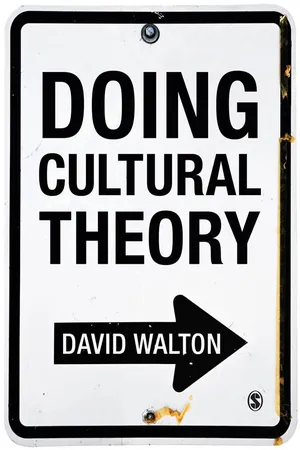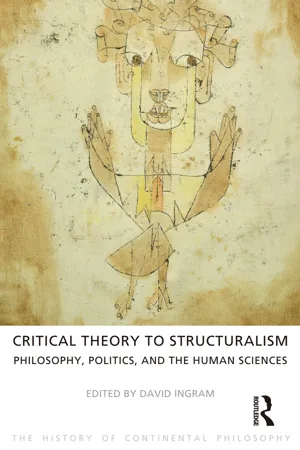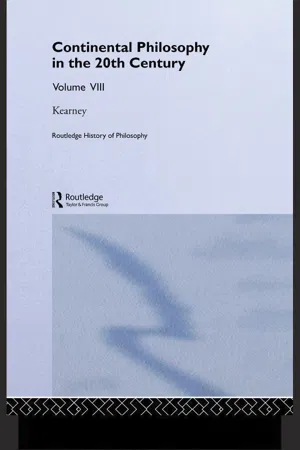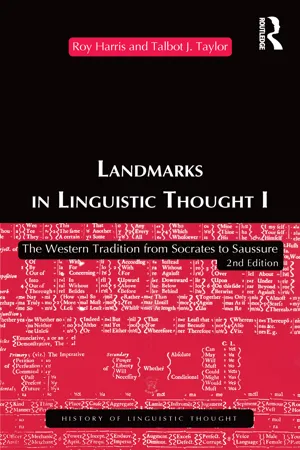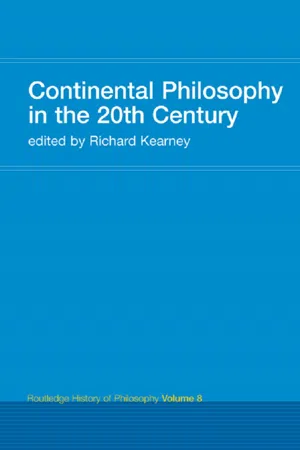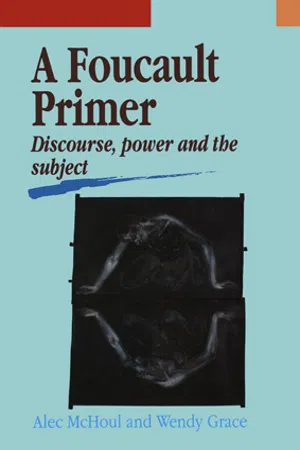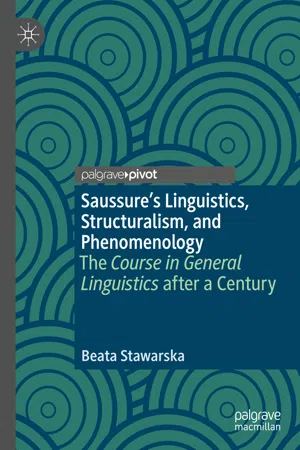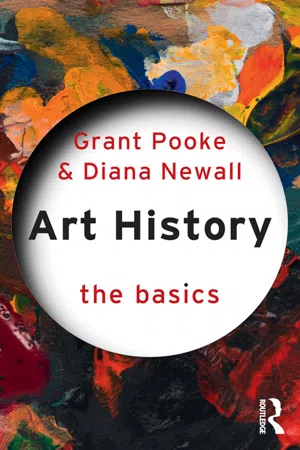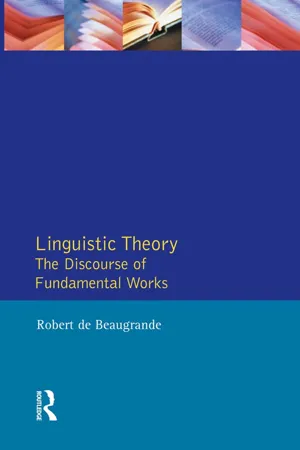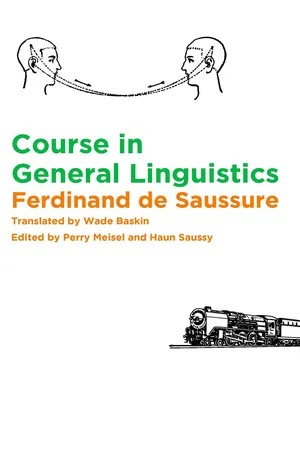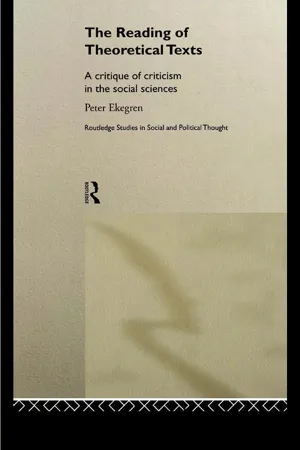Literature
Ferdinand Saussure
Ferdinand de Saussure was a Swiss linguist whose work laid the foundation for structuralism and semiotics. He is best known for his distinction between langue (the underlying system of language) and parole (actual instances of speech). Saussure's ideas have had a significant impact on literary theory, particularly in the analysis of language and meaning in literature.
Written by Perlego with AI-assistance
Related key terms
Related key terms
1 of 4
Related key terms
1 of 3
12 Key excerpts on "Ferdinand Saussure"
- eBook - ePub
- David Walton(Author)
- 2012(Publication Date)
- SAGE Publications Ltd(Publisher)
2
Structuralism and the Linguistic Turn
Ferdinand de Saussure
Introduction
The next three sections are dedicated to some of the ways structuralism has been of interest to cultural studies. This chapter will introduce one of the founders of structuralism: Ferdinand de Saussure. It will start by contextualizing the publication of his key work and will discuss the way in which his theories have been mediated to the academic world. It will then introduce his revolutionary theory of the sign, describe his main concepts and demonstrate how they may be used in practice with relation to questions of gender and patriarchal forces.Learning goals- To appreciate how Ferdinand de Saussure’s ideas have been communicated to the academic world.
- To understand Saussure’s theory of the sign and how this relates to what he called semiology.
- To see how cultures can be seen to code reality through dominant binary oppositions and construct gender identities through them.
- To develop a firm conceptual basis in order to be able to see how structuralism can work in practice.
ConceptsThe key concepts introduced in this chapter are: structuralism, theory of the sign, signifier, signified, semiology, the code, signification, syntagmatic and paradigmatic relations, langue, parole, binary oppositions and patriarchy.Second-hand Saussure
Of all the theories that have influenced twentieth-century thought structuralism has been one of the most important and revolutionary. It is primarily associated with the Swiss linguist Ferdinand de Saussure (1857–1913), who is seen as the father of structuralist thought. Although structuralism was developed within linguistics, it has left its influence on many academic areas within the arts, not only on cultural studies but on other fields including Anthropology, Philosophy, Communications and Media Studies, Political Theory and Literary Studies (to mention only a few). I shall begin discussion of structuralism by outlining, very briefly, something of the publishing history of Saussure’s key work: his Course in General Linguistics - David Hornsby(Author)
- 2014(Publication Date)
- Teach Yourself(Publisher)
Structural linguistics If the nineteeth century was an era of comparative and historical philology, the twentieth century saw a decisive shift in favour of descriptive or synchronic linguistics. Where German scholars had led the way in the previous century, the emergent twentieth-century academic discipline was to be dominated by Americans. But the man often seen as the father of what became known as structural lingustics, our focus in this chapter, was in fact a Swiss. The work of Ferdinand de Saussure, whose thinking underpins most work undertaken in this century and the last, merits consideration in some detail, as many of the dichotomies with which he is associated – langue/parole ; syntagmatic/paradigmatic; signifiant/signifié – have become part of the conceptual toolkit not just of linguistics but also of structuralist approaches to literature and social sciences. In this chapter we examine the Course in General Linguistics with which Saussure is associated, the concepts it introduced and their relevance to contemporary linguistic thought. We then consider the legacy of Saussure’s thinking in the work of the North American Descriptivists, who established linguistics as a respectable academic discipline partly by breaking away from universal models based on Classical European languages and treating each language as a system in its own right- eBook - ePub
Critical Theory to Structuralism
Philosophy, Politics and the Human Sciences
- David Ingram(Author)
- 2014(Publication Date)
- Routledge(Publisher)
9 FERDINAND DE SAUSSURE AND LINGUISTIC STRUCTURALISM Thomas F. Broden Along with psychology, sociology, and anthropology, linguistics figures among the human and social sciences established in the nineteenth and twentieth centuries that have differentiated themselves as disciplines and have achieved widespread intellectual and institutional recognition, particularly since the First World War. Like the comparative grammar that launched modern linguistics in the early nineteenth century, the structuralist paradigm that marked the first half of the twentieth century concentrated on sound in language, and secondarily on morphology. But Ferdinand de Saussure 1 and like-minded linguists such as Émile Benveniste, 2 Louis Hjelmslev, Roman Jakobson, and Nikola Trubetzkoy redefined their discipline in the spirit of their era’s scientific epistemology, elaborating an explicit theory and methodology, emphasizing a holistic approach, and establishing a synchronic perspective on a par with historical perspectives. While steeped in the cultures and texts of the idioms they studied, most structuralists called for modern linguistics to distinguish itself from the wider philological arts by concentrating on the rigorous analysis of internal linguistic mechanisms. Among the scores of groundbreaking works, Saussure’s 1916 Cours de linguistique générale (Course in General Linguistics) has made the biggest impact and generated the most debate, particularly outside linguistics. In modern continental thought, Saussure and structural linguists share certain affinities with Freud, Marx, and Nietzsche, the “masters of suspicion” who decenter rationalist and even existentialist models of man focused on the individual’s conscious introspection - eBook - ePub
Routledge History of Philosophy Volume VIII
Twentieth Century Continental Philosophy
- Richard Kearney(Author)
- 2003(Publication Date)
- Routledge(Publisher)
De Saussure, Lévi-Strauss, Barthes, Lacan, FoucaultHugh J.SilvermanFERDINAND DE SAUSSURE
The history of structuralism cannot be thought without Ferdinand de Saussure (1857– 1913). The Swiss linguist lecturing in Geneva in the early twentieth century set the scene for what in the two and a half decades following the Second World War came to be known as structuralism. The figures who dominated the development of the movement in the 1940s and 1950s were Claude Lévi-Strauss (b. 1908), Jacques Lacan (1901–82), and Roland Barthes (1915–80). By the 1960s Michel Foucault’s (1926–84) reformulations and even rejections of structuralism indicated the new directions for what became poststructuralism.Curiously, the parallel development of existential phenomenology in France ran a different course. With the possible exception of Maurice Merleau-Ponty’s (1908–61) interests in the structuralist alternative, structuralism had little or no effect upon the development of phenomenology as a philosophical movement. With poststructuralism, however, the confluence of these two different philosophical methods marked the appearance of an entirely new mode of thinking—one which is exemplified in Foucault’s archaeology of knowledge on the one hand and Jacques Derrida’s (b. 1930) deconstruction on the other. For the purposes of the present chapter however, I shall take Foucault as exemplary of this new development.1Structuralism—and especially French structuralism—cannot be understood apart from de Saussure’s semiology. According to de Saussure—as articulated clearly in the posthumously published Course in General Linguistics (1916), a compilation of several years of the Swiss linguist’s Geneva lectures [11.1 ]—semiology is ‘the general science of signs’. De Saussure proposed a new understanding of the notion of ‘sign’. He argued that the sign is not just a word but rather that a sign is both a word and concept. He named these two components of the sign the ‘signifier’ [signifiant] and the ‘signified’ [signifié]. The signifier is the word, that which does the signifying. The signified is the concept, that which is signified. Together these two components constitute a binary pair called the sign. The standard example which de Saussure offers for this binary relation is the word tree - eBook - ePub
Landmarks In Linguistic Thought Volume I
The Western Tradition From Socrates To Saussure
- Professor Roy Harris, Roy Harris, Talbot Taylor(Authors)
- 2005(Publication Date)
- Routledge(Publisher)
Saussure had a distinguished academic career as an Indo-European philologist before embarking upon the mature work in linguistic theory which occupied his later years. He gave only three courses of lectures on general linguistics, at the University of Geneva in the years 1907–11. It was the lecture notes taken by his students at these lectures, subsequently compiled and synthesized by his colleagues, which formed the basis of the work published in 1916 under the title Cours de linguistique générale (‘Course in general linguistics’). To what extent the published text of the Cours faithfully reflects Saussure’s thinking about language is a matter of some controversy. That controversy, however, is irrelevant to the subsequent chapter in the history of ideas which opens with the Cours. For, whether Saussure would have ‘authorized’ it or not, the text as published became the cornerstone of modern linguistic theory, as well as the manifesto of a more general intellectual movement of the 20th century, which has influenced such diverse disciplines as psychology, social anthropology and literary criticism. That broader intellectual movement is nowadays known as ‘structuralism’. Although structuralism was not a term Saussure himself invented or ever used, one of Saussure’s central tenets may nevertheless be stated as follows: in order to make any serious study of linguistic phenomena we must give priority to the concept that langue is a structure, and that its essential – indeed sole – properties are structural properties. Everything else about language is marginal and accidental: even the fact that sound is the medium universally used for the linguistic activity of speech. For speech (parole), according to Saussure, is not to be confused with langue. Parole, although a reflection of langue, is merely its external manifestation. What was fundamentally wrong with 19th-century language studies, in Saussure’s view, was its complete failure to distinguish between langue and parole - eBook - ePub
Continental Philosophy in the 20th Century
Routledge History of Philosophy Volume 8
- Richard Kearney, Richard Kearney(Authors)
- 2015(Publication Date)
- Routledge(Publisher)
CHAPTER 11 French structuralism and after De Saussure, Lévi-Strauss, Barthes, Lacan, FoucaultHugh J. SilvermanFERDINAND DE SAUSSUREThe history of structuralism cannot be thought without Ferdinand de Saussure (1857–1913). The Swiss linguist lecturing in Geneva in the early twentieth century set the scene for what in the two and a half decades following the Second World War came to be known as structuralism. The figures who dominated the development of the movement in the 1940s and 1950s were Claude Lévi-Strauss (b. 1908), Jacques Lacan (1901–82), and Roland Barthes (1915–80). By the 1960s Michel Foucault’s (1926–84) reformulations and even rejections of structuralism indicated the new directions for what became poststructuralism.Curiously, the parallel development of existential phenomenology in France ran a different course. With the possible exception of Maurice Merleau-Ponty’s (1908–61) interests in the structuralist alternative, structuralism had little or no effect upon the development of phenomenology as a philosophical movement. With poststructuralism, however, the confluence of these two different philosophical methods marked the appearance of an entirely new mode of thinking – one which is exemplified in Foucault’s archaeology of knowledge on the one hand and Jacques Derrida’s (b. 1930) deconstruction on the other. For the purposes of the present chapter however, I shall take Foucault as exemplary of this new development.1Structuralism – and especially French structuralism – cannot be understood apart from de Saussure’s semiology. According to de Saussure – as articulated clearly in the posthumously published Course in General Linguistics (1916), a compilation of several years of the Swiss linguist’s Geneva lectures [II.I] – semiology is ‘the general science of signs’. De Saussure proposed a new understanding of the notion of ‘sign’. He argued that the sign is not just a word but rather that a sign is both a word and concept. He named these two components of the sign the ‘signifier’ [signifiant] and the ‘signified’ [signifié], The signifier is the word, that which does the signifying. The signified is the concept, that which is signified. Together these two components constitute a binary pair called the sign. The standard example which de Saussure offers for this binary relation is the word tree - eBook - ePub
- Alec McHoul, Wendy Grace(Authors)
- 2013(Publication Date)
- Melbourne University Press Digital(Publisher)
Course in General Linguistics (1974, Fr 1916), for example, by applying Saussurean concepts to such cultural objects as restaurant menus. To this extent, the problem was not so much one of ‘crisis’ as of repetition or sheer ‘sameness’, at least at the theoretical level. But significantly enough, it was Barthes’ later (1978, 1981)—arguably post-semiotic—texts which helped lead the way out of this impasse, and towards the new emphasis on language and discourse in the human sciences known as the ‘linguistic turn’.This rethinking was political in its fundamental inspiration. First, Saussure’s basic conception of the linguistic sign, as split into two aspects, the signifier and the signified , came in for criticism. The signified was, for Saussure, a mental representation or concept corresponding to any spoken utterance or written mark. The signifier was ‘not the material sound, a purely physical thing, but the psychological imprint of the sound, the impression it makes on our senses’ (Gadet, 1989:28). This notion of the signified, being the mental backbone (or meaning) behind the surface signifier (or sound-image), placed too much value on a naive theory of mind. In this sense, Saussurian structuralism came to be thought of in relation to bourgeois idealism: language had been reduced to ideas, concepts and psychological ‘imprints’. On the other hand, replacing the notion of the signified with, say, a ‘real’ object as opposed to a purely psychological one—as was popular in positivist accounts of meaning—pointed in the direction of an equally pernicious realism and, thereby, again supposedly towards bourgeois thought (Coward and Ellis, 1977). Foucault documents his own objections to these views of language in the preface to The Birth of the Clinic (1973).More generally, this impasse in structuralism led many thinkers to consider language and discourse as being something other than a representation of non-discursive ‘reality’, whether in the mind or in the real world. In essence, theories of the relations between language and the ‘real’ were abandoned in favour of theories relating linguistic element to linguistic element (Silverman and Torode, 1980). Semiotics and structuralism, that is, moved towards the signifier side of things. Discourse, then, took on the guise of a relatively autonomous, yet quite material, sphere in its own right. This position became known as the theory of the ‘materiality of the signifier’. Hence there was a new semiology of the signifier, of discourse and of discursive relations which dropped its purely analytic stance and took on aspects of a political and historical critique, albeit of a vaguely Marxish kind. Language ceased to be the province of formal linguistics alone. It was reconceived as a social and political entity, the means by which what we know of the world can be created (rather than simply represented). The very term ‘language’ appeared insufficient to this task since it had always implied merely a system - eBook - ePub
Saussure's Linguistics, Structuralism, and Phenomenology
The Course in General Linguistics after a Century
- Beata Stawarska(Author)
- 2020(Publication Date)
- Palgrave Macmillan(Publisher)
It follows that language as a whole can be construed as a relatively self-contained signifying web. As one scholar of structuralism put it: The essential feature of Saussure’s linguistic sign is that, being intrinsically arbitrary, it can be identified only by contrast with co-existing signs of the same nature, which together constitute a structured system. By taking this position, Saussure placed modern linguistics in the vanguard of twentieth-century structuralism. (Harris 2013, xv) The structuralist view of language attributed to Saussure is based chiefly on the arguably most influential section of the Course : Chapter 1. “Nature of the linguistic sign” (Part One, General Principles). This chapter introduces the above-noted distinction between the sign (signe), the signifier (signifiant), and the signified (signifié), and it lists two basic principles regarding the arbitrary and the linear nature of the sign. An individual sign, such as the word tree, is taken here as a basic building block of the language system. Chapter 1 does not explain how and why the self-standing sign will enter into a network of relations to the other signs. Such entry is especially difficult to imagine considering that an individual sign appears to be a purely positive parcel of signifying content, whereas the differential relations between signs suppose a degree of negativity (tree is not /does not mean the same as three or free). How then to reconcile the idea of a linguistic sign with statements found later in the Course that “…in a language there are only differences, and no positive terms” (Saussure 2013, [166] 140–141)? Philosophers like Derrida rightly wondered whether Saussure uncritically assumed the age-old metaphysical definition of a signans/signatum that is perennially at odds with the conception of language as a relational web (see Chap. 7 for Derrida’s critique) - eBook - ePub
- Diana Newall, Grant Pooke, Diana Newall(Authors)
- 2008(Publication Date)
- Routledge(Publisher)
Fundamentally, language is a means of communication between human beings (and possibly animals (Sebeok 1972)) and the study of languages is called linguistics. The components of language are verbal – relating to speech, sounds or phonetics – and written – relating to the written representation of sounds and words. The academic discipline of linguistics studies the structures and relationships of these different components in order to understand the construction and origins of languages. For example, linguists might look at the structures within a written language, the structural connections between two different languages or relationships between verbal and written forms of a language. A subset of the discipline is phonetics, which studies the sound systems of languages and how individual verbal sounds (phonemes) form words.FERDINAND DE SAUSSURESaussure explored language from a perspective diferent to these approaches. He sought to explain how words in a language – linguistic signs – mean what they mean. He wanted to understand the construction of signs and their meaning rather than the structures of specific languages.Saussure indentified two components in the linguistic sign: • the physical element, the actual spoken or written word – the signifier; • the mental concept, the idea of the sign – the signified.These two components are interdependent but separate. For example, if I say the word ‘shoe’ there is the phonetic sound and the idea in my mind of what a shoe is. It is not a specific shoe (such as the left green suede shoe), but a general concept of a shoe. I cannot say the word shoe, and you cannot hear it, without invoking the idea of a shoe.In separating the two components, Saussure acknowledged their arbitrary relationship. Not only could other signifiers conjure the same mental concept (for example, different languages have different words for shoe), but also the word shoe is just the word which has been assigned by time, convention and practice. That is not to say that signifiers can be changed randomly but that there is no intrinsic reason for a particular signifier/signified relationship. The arbitrary nature of the signifier/signified relationship means that language is in some ways constructed independent of the reality which it describes.Saussure also claimed that the meaning of the word shoe is relational and depends on its difference - eBook - ePub
Linguistic Theory
The Discourse of Fundamental Works
- Robert-Alain De Beaugrande(Author)
- 2014(Publication Date)
- Routledge(Publisher)
Chapter 2Ferdinand de Saussure 1
2.1 Ferdinand de Saussure's Cours de linguistique générale (Course in General Linguistics) is a peculiar book, not merely published but in part composed after the author's death. Since he ‘destroyed the rough drafts of the outlines used for his lectures’, the editors, Charles Bally, Albert Sechehaye, and Albert Riedlinger, used ‘the notes collected by students’ in order to ‘attempt a reconstruction, a synthesis’, and to ‘recreate F. de Saussure's thought’ (CG xviiif). To ‘draw together an organic whole’, the editors tried to ‘weed out variations and irregularities characteristic of oral delivery’, and to ‘omit nothing that might contribute to the overall impression’ (CG xix). Thus, the ‘Saussure’ of the Cours is a composite voice, speaking from a lecture platform between 1897 and 1911 and passing through the notebooks of followers who confess that ‘the master’ ‘probably would not have authorized the publication of these pages’ (CG xvii, 38, xviiif). Many problems with its formulation and interpretation may reflect the difficulties of its composition.2.2 Saussure – or ‘Saussure’, as I should write perhaps – seems fully conscious of his role as founder of a ‘science’. He constantly searches for generalities, high-level abstractions, and fundamental definitions. Over and over, he states what is ‘always’ or ‘never’ the case, what applies in ‘each’ or ‘every’ instance, what are the ‘only’ relevant aspects, and so on. At times, these universalizing assertions may go beyond what can be demonstrated, or conflict with each other in puzzling ways.2 Formulating the common denominators of Saussurian ‘thought’ can thus be quite challenging.2.3 His ‘hesitation to undertake the radical revision which he felt was necessary’ in linguistics seems to have deterred him from writing a general book; in fact, ‘he could not bring himself to publish the slightest note if he was not assured first of the fundamental foundations’ (Benveniste 1971: 33). In a letter to Antoine Meillet dated 4 January, 1894 he proclaimed himself ‘disgusted’ ‘with the difficulty’ of ‘writing ten lines concerning the facts of language which have any common sense’, and with ‘the very great vanity of everything that can ultimately be done in linguistics’ (ibid. , 33f). He lamented ‘the absolute ineptness of current terminology, the necessity to reform it, and, in order to do that, to show what sort of subject language in general is’. In the Cours , he still finds ‘current terminology’ ‘imperfect or incorrect at many points’, and its components ‘all more or less illogical’ (CG 44). Still, he often proposes and defends terms with bravura, and many of these have become standard. And he ‘does not hesitate to use’ ‘the expressions condemned’ by ‘the new school’ he envisions (CG 5n) (cf. 2.30 ).3 - eBook - ePub
- Ferdinand de Saussure, Wade Baskin, Perry Meisel, Haun Saussy(Authors)
- 2011(Publication Date)
- Columbia University Press(Publisher)
Introduction: Saussure and His Contexts“Signifier” and “Signified”: Reclaiming Saussure’s LegacyThis new edition of Saussure’s Course in General Linguistics (1916) restores the Saussure that generations of English readers grew up on: Wade Baskin’s 1959 translation. In addition to its inherent elegance, Baskin’s translation of the lectures Saussure gave at the end of his life at the University of Geneva is indispensable for a very particular reason, one that Roy Harris’s 1983 translation wholly obscures: the rendition of Saussure’s terms “signifiant” and “signifié” (CLG 1972, 99) as “signifier” and “signified” (CGL 1959, 67). These equivalent neologisms in French and English embody precisely what is revolutionary about Saussure’s thought and what is specific to it. Baskin’s translation makes this revolution clear. Saussure presents the solution to a problem in the history of ideas that stretches back to Plato and that reached crisis proportions in the late nineteenth century: the problem of reference. Most familiar as a problem in poetics, it is a problem in all media, including the life sciences, which is why Saussure reconceived the problem of reference as one of signification. Many false starts delayed Saussure’s discovery until the end of his life, daunted as he was by the numerous historical contexts in which he had to test his ideas in order to ensure their durability. Traditionally cast as the problem of mimesis—of language as imitating or representing what it refers to—the problem of reference is put on an entirely different footing by what Saussure eventually achieved.Regarding Saussure in this way situates his achievement not only specifically but also outside of linguistics proper, where he has never been accorded an especially happy position. Saussure is not a system builder, and his findings are not easy to apply to the ambitions of scientific projects. Rather, as his position in the history of ideas suggests, he is a philosopher, however unwillingly, and a philosopher with the particular mission of solving a problem in poetics. It is no surprise that structuralism faded when it tried to become a systematic semiology. The philosophical consequences of Saussure’s inventiveness are more indirect and profound than they are programmatic. Roland Barthes, Michel Foucault, Jacques Derrida, and Jacques Lacan are the surest proofs. By reconceiving reference as signification rather than as mimesis, Saussure and his disciples no longer allow one to take for granted the assumptions that mimesis as a notion traditionally puts in place: the separation of word and thing, subject and object, self and world. Saussure requires a reimagination of these categories and a makeover of the way we think. - eBook - ePub
- Peter Ekegren(Author)
- 2002(Publication Date)
- Routledge(Publisher)
It is within the system that the sign gets its value and meaning; 73 in its relation to other signs, ‘each term has its value through its contrast with all other terms’ (Saussure, 1988:88). Langue, then, is characterized by the contrasts between its integral parts (Saussure, 1988:105); in short, but most importantly, the consequence of this is, according to Saussure, that In langue itself, there are only differences. Even more important than that is the fact that, although in general a difference presupposes positive terms between which the difference holds, in langue there are only differences, and no positive terms…. In a sign, what matters more than any idea or sound associated with it is what other signs surround it. (Saussure, 1988:118, italics added, see also pp. 114ff) Thus, signs are wholly dependent upon other signs, they are relational (‘The content of a word is determined in the final analysis not by what it contains but by what exists outside it’; Saussure, 1988:114). It is from this principle of differentiation and from the statement that in language there are no positive terms, that I will return to Derrida and his critique of the Saussurean system, a critique resulting in a conception of language upon which a distinction between literary/philosophical texts on the one hand and scientific texts on the other may rest. In reality, Derrida’s critique or deconstruction of Saussure’s linguistics commences with quite other, more basic points, those of phonocentrism, presence and logocentrism present in and characterizing the whole of Saussure’s system, 74 but it would take me too far astray were I to rehearse this
Index pages curate the most relevant extracts from our library of academic textbooks. They’ve been created using an in-house natural language model (NLM), each adding context and meaning to key research topics.
Explore more topic indexes
Explore more topic indexes
1 of 6
Explore more topic indexes
1 of 4
